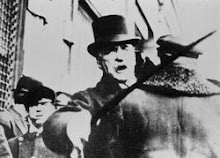
There is the most trading volume per second during the first and last thirty minutes than during any other point in the day. This means that if you are a fund manager, or large investor, or whale you want to buy/sell during the opening or closing of the market in order to maximize the amount of your inventory that you can accumulate/liquidate.
For example: assume that during 9:30-10:00am you could sell 5 million shares while depressing the market two dollars. During 10:00-10:30 that 5 million would move the stock 10 points. When do you want to sell it? Exactly: during the open. Since you can buy/sell more off the open, price becomes a non-factor. Moving stocks up or down a few percent is a function of how much size people have to accumulate (buy) or distribute (sell) at any given moment.
Since the open and close represent the greatest opportunity for large shareholders to enter and exit quickly, you will always see large orders towards the opening and close of the market.





2 comments:
@RiskAffine Thanks for the quick blog post. It generally makes sense, but it seems like profit taking on AMZN happened pretty quickly.
My original thought was that traders reacted too quickly to the press release saying Amazon had a record season in terms of orders. Stock shot up 5%, but then everyone realized Amazon didn't release revenue or profit numbers, creating some caution in trading.
To me, if the market were efficient it would have only gone up the 2.5% in the beginning - good results, but suspect without the profit numbers.
it depends on what you define as efficient. if you are referring to the strong form of efficiency hypothesis then it almost certainly doesn't exist.
in reality what we see is a overlapping of very tiny periods of efficiency. at any given moment x number of shares need to be bought, and y need to be sold. making no assumptions as to why these amounts are offered, if x>y, then the price will rise as the market temporarily clears itself.
equilibrium theory is a very clever fallacy.
Post a Comment